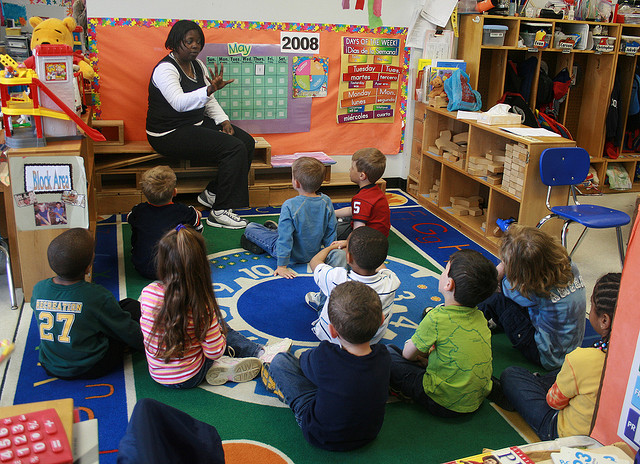Death, Dying, Tibetan Meditation & Children with ADHD.
Using ancient Tibetan practices for training the mind, including much-studied and quantifiable practices of meditation, caregivers (as well as parents and teachers) of children with ADHD change themselves, in order to encourage and initiate healing in children.
This idea is based on ECEL, the Empathic Care of the End of Life, a method allowing a direct communication between caregivers and the dying, inspired by Tibetan thanatology (the science of death and dying), where the caregivers are trained to actively become more and more empathic as the dying become more and more empathic themselves.
The problem:
The U.S. Centers for Disease Control estimated that in 2011, 6.4 million children—or 11 percent of American children age 4 to 17—had a diagnosis of attention deficit hyperactivity disorder (ADHD). To treat this, these young people are frequently subjected to heavy dosing and often-risky psychopharmacological drug therapies that can have negative long-term side effects.
With ADHD it is not just the child that suffers: this issue affects teachers, parents, siblings and other caregivers, so the impact ADHD has on our communities is dramatic.
A restless or obsessive child often suffers from a discomfort that he or she cannot verbalize. What can be done to help ease them and to empower them to face their own distress?
The solution:
The solution is quite a revolutionary one, one of those ideas that seems easy or simple once you discover it.
Empathy is an excellent and non-invasive way of communication, which surprisingly enough becomes a kind of a treatment for ADHD. Our experience shows that the empathic listening enables the caregiver to perceive the child’s real needs that underlie the distressing behavior, so that they respond to the situation appropriately.
For example, we are faced with a child who is acting aggressively towards us. Normally we would have a reaction of intolerance, but if we have enough experience in meditative states, we can enter an empathic state of perception and see the situation is completely different. From there we can sense the child’s suffering and understand that we are not the real target of this bad behavior. We just see the suffering that would very much like to be seen and soothed.
We feel the suffering of the other to some extent, without it overwhelming us, just so we can get a sense of what is behind the aggressive behavior.
But there is much more than this…
Since children are eminently empathic and receptive, they directly experience the state of mind of those in their surroundings. When a caregiver is trained to access and maintain a peaceful and compassionate state of mind, children can empathically absorb it. The children’s repeated experience of this enables them to not only desire, but replicate this state within themselves. They learn through direct experience how to deescalate symptoms and develop capacity for long-term self-care.
Meditation is proven to balance the brain’s beta and theta waves, which enables concentration and focus—something children with ADHD typically have difficulty with. Among the most recent studies, of particular interest is, “ADHD Brain Functioning and Transcendental Meditation Practice,” conducted in 2011 by Travis, Grosswald and Stixrud. Six months after the subjects started training with TM, the imbalance in the relationship between beta and theta waves was reduced by 48% whereas drugs can only reduce it by 3%, and neurofeedback by 25%. A 30% increase in the integrated and harmonious functioning of the brain was also recorded.
How is this connected to Tibetan practices of caring for the dying?
TM is not part of the Tibetan training of the mind, but it is not so different either from the basic ingredients of it, so the results of this study are really interesting for us too. Tibetan thanatology (the science of death and dying) gives us a complete training on transforming our mind. It has been rigorously tested by Western neuroscientists.
We know now that a certain part of the brain can be developed by a certain kind of meditation. We also know that direct knowledge (empathy) and loving compassion correspond to different parts of the brain, which are traditionally developed through different trainings. And we need both: ethically-oriented awareness (through compassion, or love)—and love, made intelligent by awareness.
The dying become empathic. They feel your state of mind directly, as do children. It means the way you are is more important than what you say or do.
If you want to help, be peace. Listen from a cultivated empathic state where you feel less separation; then, a direct communication becomes possible. It will work even when the person who is dying cannot hear you anymore. No projection. Total understanding. A way of listening that is direct, deep. Experience directly that we are not just these impermanent bodies and minds, but also part of universal consciousness. If you experience this, won’t your fear of death disappear? And if you listen to a child in this way, won’t their fears lessen as well?
In this empathic relationship, there is no one who gives while the other receives, no one who cares while another is being cared for, no one who knows while the other doesn’t. Once you establish yourself in this cultivated empathic state, the strength, the beauty, the greatness of the other is revealed. You won’t need to look into your resources for something to give the other. You will help them by exalting theirs.
Love elephant and want to go steady?
Sign up for our (curated) daily and weekly newsletters!
Author: Daniela Muggia
Editor: Travis May
Photo: Flickr/woodleywonderworks







Read 4 comments and reply